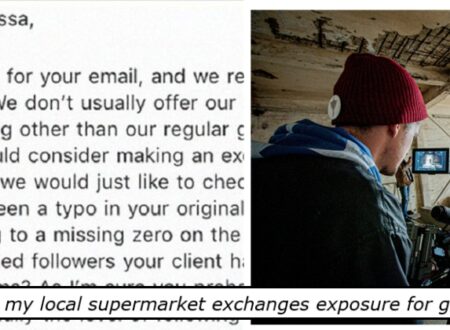Stop funding the wrong future

It’s time to admit it: Too much of the social impact sector is still funding yesterday’s solutions while claiming to advance towards a better tomorrow.
I’ve been in this sector since I was a teenager—first as a volunteer, then a builder, and now the founder of one of the fastest-growing global tech-for-good ecosystems. In July, I spoke at the AI for Good Global Summit in Geneva, where my Tech To The Rescue team co-organized the inaugural Impact Awards with the U.N. Reviewing hundreds of applications made one thing clear: AI is not a spreadsheet upgrade. It’s not a shiny new tool to tape onto old processes. It’s a paradigm shift that will fundamentally change how social impact work gets done—or if it gets done at all.
Yet as funding tightens worldwide, too many well-meaning philanthropies and public funders continue to back “safe” innovation. They’re pouring dwindling dollars into essential training programs and pilots, often without the deeper, fundamental work of building truly AI-native organizations. Or worse, they simply bolt AI onto outdated models as superficial add-ons.
This isn’t just a tactical mistake. It’s a systemic failure. Because the stakes aren’t theoretical. When the wrong approach wins funding, real communities lose time they don’t have.
The sector’s favorite stance: “We’re ready”
Tinkering and experimentation are crucial in innovation; they’re the messy beginning, the fearless exploration of doing something differently. But most current “AI upskilling” strategies don’t go deep enough. They promise transformation but deliver surface-level tool adoption. They teach nonprofits to use chatbots, or off-the-shelf SaaS without changing the underlying mindset or organizational DNA.
Tools alone won’t bridge this glaring gap between today’s organizations and tomorrow’s reality. By 2027, technology will be talking to technology. And how do we respond to that? Currently we translate 20th century workflows into 21st century software. We optimize the wrong things. We’re not preparing social impact organizations for a future defined by machine learning, large language models, and autonomous decision systems. We’re handing them hammers and asking them to fix microchips.
And yes, some of this is our own fault as an industry. We reward safe proposals. We praise incrementalism. We design funding cycles to avoid complexity. And then we act surprised when no one steps up with real change.
What AI-native impact could look like
At the AI for Good Summit, reviewing projects was a crash course in where the sector is getting it right—and wrong.
Some of the winners point to exactly the kind of AI-native, partnership-driven future we need:
- CareNX Innovations built an AI-powered fetal monitoring system for rural clinics without specialists, helping reduce preventable infant deaths. Not just automation, but new, accessible medical capability.
- SmartCatch by WorldFish combines machine learning, computer vision, and on-device species recognition to help small-scale fishers manage sustainable catch while fighting biodiversity loss—a systems-level intervention that includes everyone.
- Farmer.Chat from Digital Green offers localized, voice-based agricultural advice in low-literacy, low-connectivity settings. Large language models adapt to context, not just push generic tips.
- Sophia from Spring ACT is an AI-powered chatbot offering secure, anonymous, multi-language support to domestic violence survivors worldwide—showing how ethics and impact can be built in from the ground up.
These aren’t just shiny demos. They’re working examples of how AI can help build real, resilient, human-centered solutions—if we’re willing to fund them.
Stop funding AI add-ons and start funding disruption
If you’re a funder, this is the call to get serious.
Stop funding cosmetic changes. Invest in the transformative. Look for partners who don’t just want to use AI, but who are ready to become AI-native.
That means backing organizations willing to rethink how they deliver services, measure impact, and collaborate across sectors. It means funding those willing to merge, partner, or even cannibalize their old models to serve people better.
We can’t afford to keep funding NGOs that add AI as a feature. We need to help build the next generation of social impact organizations that are designed from the ground up for an AI world.
A future worth funding
What does that future look like? It’s one where nonprofits stop solving problems in silos. Where they build shared infrastructure—data, models, platforms—to tackle challenges at scale. Where small teams use AI to compress timelines and costs, making solutions accessible in the places with the fewest resources.
It’s a world where human expertise focuses on empathy, ethics, and hyperlocal context, while technology handles the repeatable, the predictable, the scalable.
We’ve seen glimpses of this at Tech To The Rescue. Through our AI for Changemakers program alone, we’ve worked with over 100 organizations in the past year to move beyond one-off pilots. We’ve helped them build AI strategies, access affordable tooling, and design real solutions for crisis response, healthcare, education, and more. And even with all that, too many nonprofits still struggle to implement, let alone scale.
Because the real barrier isn’t tools. It’s the ability to disrupt themselves before the world does.
The case for betting on disruption
If you’re a donor, an investor, a policy maker: Your job isn’t to make organizations comfortable. It’s to make them effective.
That means funding the ones ready for the rollercoaster. The ones that want to build shared systems, not own proprietary ones. The ones willing to be accountable for outcomes, not just activities.
And yes, it means accepting some failure along the way. Because the alternative is pretending we’re changing the world while replicating the same failures at scale.
Stop talking—start funding disruptors
For too long, our sector has been stuck in a loop—talking, workshopping, strategizing, while advancing slowly. The world doesn’t need more frameworks. It needs action.
Full disclosure: At Tech To The Rescue, we’re climbing the same hill. We wrestle with impact tracking, speed, and staying in the zone of truth over hype. Some days we move too slowly. Some days we move too fast. We don’t always get it right.
But this is the only way to build anything that matters now. It’s messy. It’s hard. But it’s also how we’re going to win.
By 2030, the social impact sector won’t look like it does today. Many nonprofits will merge or vanish. The ones that remain will be AI-native, collaborative, and ruthlessly focused on outcomes, not activities.
If you want to fund something that will matter in 2030, start funding those building that future now.
Jacek Siadkowski is CEO and cofounder of Tech To The Rescue.
What's Your Reaction?
 Like
0
Like
0
 Dislike
0
Dislike
0
 Love
0
Love
0
 Funny
0
Funny
0
 Angry
0
Angry
0
 Sad
0
Sad
0
 Wow
0
Wow
0



















































![MYLLO’s “Burned” captures the dark side of toxic love and heartbreak [Music Video]](https://earmilk.com/wp-content/uploads/2025/07/MYLLO-800x379.jpg)










































